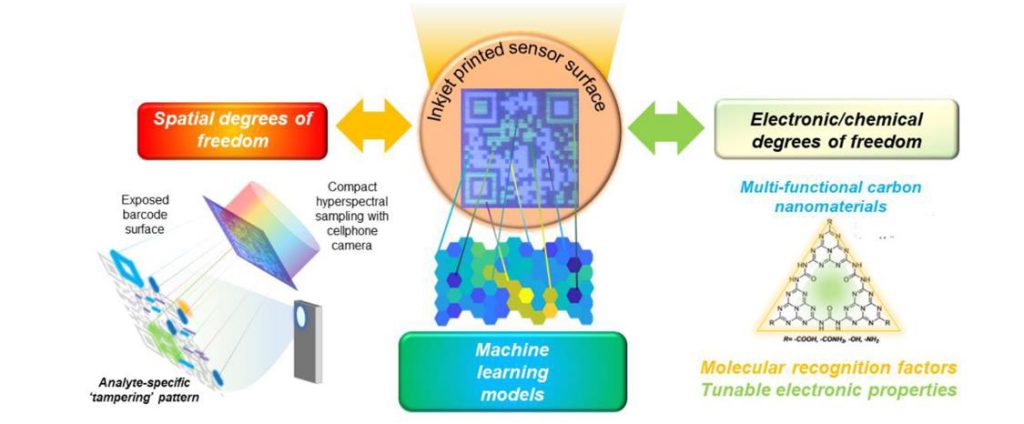Portable and Sensitive Threat Detection Using Carbon Dot Nanomaterials/Bar Coding Technology
Innovative technology uses convenient cell phone readout to rapidly identify hazardous materials for defense, emergency response and environmental monitoring
The need for effective, portable, and user-centric threat detection systems is increasingly important in today’s environment. Traditional detection solutions often depend on bulky equipment that is difficult to transport and requires specialized training to operate. This can lead to delays in making accurate assessments in time-sensitive situations. Many existing systems may not have the sensitivity necessary to distinguish between different types of threats, potentially resulting in false positives or negatives that could compromise safety. This technology offers a practical solution, enabling first responders to quickly assess potential hazards with confidence in their detection capabilities.
Military personnel, emergency responders, and environmental safety organizations require portable, intuitive detection systems that can swiftly identify a wide range of threats, including explosives and chemical, biological, radiological, and nuclear (CBRN) agents. This technology offers a user-friendly readout on a cell phone, indicating the presence or absence of hazardous materials. This convenient feature allows users to make informed decisions quickly, enhancing operational efficiency and safety. As threats evolve, customers need access to reliable detection technologies that are accessible to users without a technical background and are adaptable to diverse environments and scenarios.
Researchers at Sandia National Laboratories have developed non-toxic, photostable carbon dot-based sensor nanomaterials that enhance threat detection and differentiation. The materials are synthesized and processed for easy integration with inkjet printing, enabling scalable sensor production. The system employs hyperspectral readout and widefield interferometry, allowing for portable cell phone camera-level sampling. Advanced data models, including supervised and unsupervised learning, improve pattern recognition and feature classification, using self-organizing maps and multi-layer perceptron networks to enhance accuracy.
The Portable and Sensitive Threat Detection Using Carbon Dot Nanomaterials and Barcoding Technology offers exceptional sensitivity and specificity, allowing for precise differentiation between threats while minimizing false positives. The user-centric design ensures accessibility for non-experts, and the cell phone readout feature enhances convenience, making it ideal for field-deployable and miniaturized systems. This technology provides rapid detection and real-time analysis of potential threats, delivering a competitive edge to customers in need of thin-film sensors, photonic sensors, and Internet of Things (IoT) sensors.
- Enhanced Safety: The technology offers rapid and accurate detection of trace-level (mM concentration) hazardous analytes which improves safety for personnel and the public.
- Cost Effective: It minimizes costs associated with security breaches and inefficient detection methods, leading to better resource allocation.
- Increased Efficiency: It streamlines operations, allowing for quicker decision-making in emergency situations and enhancing response times.
- User-Centric Design: It is accessible for non-experts, reducing the need for extensive training and enabling broader deployment.
- Versatile Applications: The technology is adaptable to multiple environments and threats, making it suitable for numerous industries, from defense to public health.
- Portability: It uses cell phone cameras for threat detection and is easy to carry and use in remote or resource-limited settings.
- Defense and Security
- Emergency Response
- Environmental Monitoring
- Industrial Safety
- Public Health

SD# 16100, 16799
Published9/22/2025